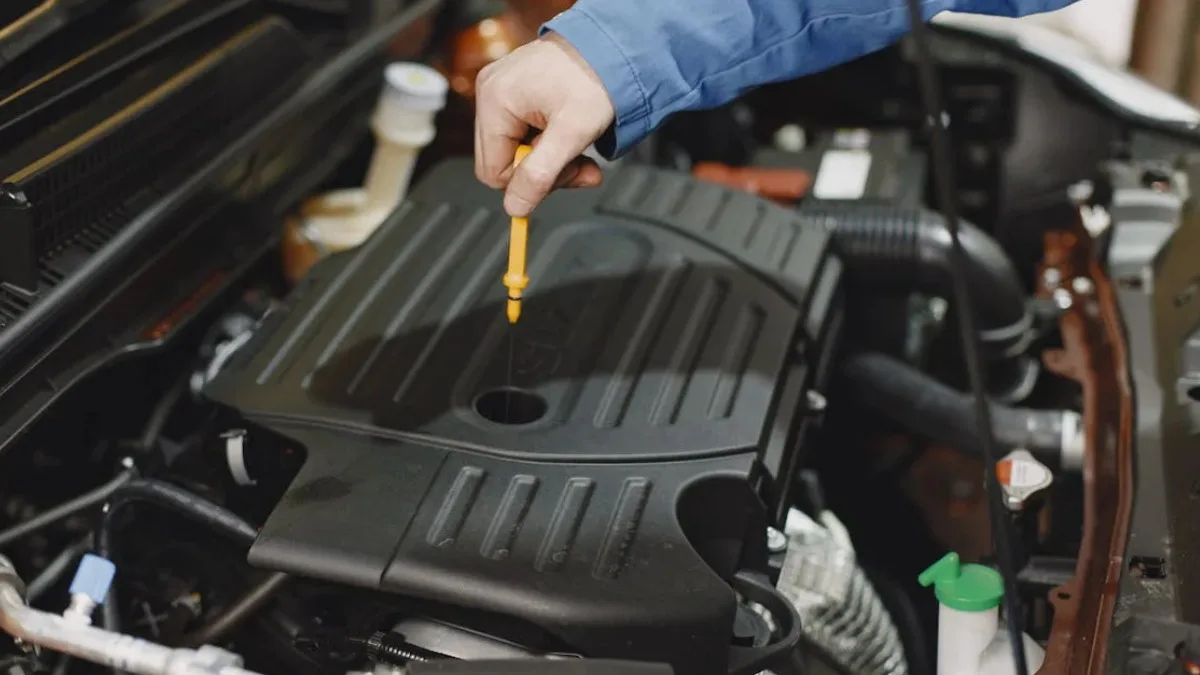Maintaining the quality of your car’s engine oil is crucial for optimal engine performance and longevity. Engine oil plays a pivotal role in reducing friction, cooling engine parts, and protecting the engine from wear and tear. However, over time, the oil’s quality degrades due to contamination, heat, and usage. Checking engine oil regularly is an essential part of vehicle maintenance that can save you from expensive repairs. In this guide, we will walk you through the latest tips on how to assess the quality of your car’s engine oil, ensuring that your vehicle runs smoothly and efficiently.
1. Check the Oil Level and Consistency
One of the simplest yet most effective ways to check engine oil quality is by examining the oil level and consistency. Here’s how to do it:
- Park your car on a flat surface and ensure that the engine is cool before checking the oil.
- Pull out the dipstick from the engine bay and wipe it clean with a cloth or tissue.
- Insert the dipstick back in and pull it out again to check the oil level. The oil should be between the “minimum” and “maximum” markers on the dipstick.
- Examine the consistency of the oil: The oil should be smooth and free of any debris. If the oil appears thick, gritty, or sludgy, it is an indication that the oil is dirty and needs to be changed.
2. Inspect the Oil Color
The color of your engine oil can tell a lot about its condition. Fresh engine oil typically has a golden or amber color, but over time, it can darken due to contaminants such as dirt, debris, and engine byproducts. Here’s a quick guide to understanding oil color:
- Golden or amber: The oil is fresh and in good condition.
- Dark brown: The oil is used but still functional. It’s nearing the end of its useful life.
- Black: The oil is heavily used and has accumulated contaminants. It should be changed immediately.
- Milky or foamy: This indicates a possible coolant leak into the engine, which requires immediate attention from a mechanic.
3. Smell the Oil for Unusual Odors
Burnt or unusual smells from your engine oil can signal potential problems. Normally, engine oil has a mild smell, but if you detect a burnt odor, it could indicate overheating or engine damage. Additionally, a strong gasoline smell in the oil can suggest fuel contamination, which may point to an issue with the fuel injection system or engine seals.
4. Check for Metal Particles
While inspecting the engine oil, look for any metal shavings or particles. The presence of metal in the oil can indicate excessive engine wear or damage to the internal components, such as bearings or pistons. If you find metal particles in the oil, it’s advisable to take the vehicle to a professional mechanic for further diagnosis, as this could lead to costly engine repairs if not addressed promptly.
5. Perform a Blot Test
A blot test is a quick and easy way to assess the condition of your engine oil. To do this test, simply place a few drops of oil from the dipstick onto a piece of white paper or a blotting paper. Allow the oil to spread and observe the pattern after a few minutes. Here’s what to look for:
- Clear, even distribution: Indicates clean and good-quality oil.
- Dark center with a clear outer ring: Suggests the oil is contaminated and nearing the end of its life.
- Multiple dark rings or patches: Indicates excessive contaminants and sludge, signaling that the oil needs to be changed.
6. Observe the Oil Pressure Gauge
Most modern cars come equipped with an oil pressure gauge or warning light. If you notice the oil pressure light coming on or the gauge showing low oil pressure, it could mean that the oil level is low or that the oil quality has deteriorated. In such cases, check the oil immediately and top it up if necessary. However, if the oil pressure remains low even after topping up, it could indicate a more serious issue, such as a faulty oil pump.
7. Follow the Manufacturer’s Guidelines
Each car model comes with specific engine oil recommendations from the manufacturer. Always refer to your car’s owner’s manual to understand the recommended oil type (e.g., synthetic, semi-synthetic, or conventional), oil viscosity, and oil change intervals. Regularly following these guidelines will help maintain the quality of your engine oil and extend the life of your vehicle.
8. Use an Oil Life Monitor (If Available)
Some modern cars are equipped with an oil life monitoring system that tracks engine conditions and driving habits to calculate when the oil should be changed. This system can provide accurate information on oil quality and warn you when the oil is nearing the end of its life. Make sure to reset the system after every oil change to ensure accurate readings.
9. Regularly Change the Oil Filter
The oil filter plays a crucial role in maintaining oil quality by trapping dirt, debris, and metal particles. A clogged or dirty oil filter can reduce oil flow and degrade oil quality. Make it a point to change the oil filter every time you change the engine oil, as recommended by the manufacturer.
10. Consult a Mechanic for Professional Testing
If you’re unsure about the quality of your engine oil or notice any issues with your car’s performance, it’s best to consult a professional mechanic. They can perform detailed tests such as oil analysis, which evaluates the oil’s chemical composition and identifies contaminants, wear metals, and other potential problems. Regular professional inspections can help catch issues early and prevent expensive repairs.
Conclusion
Checking the quality of your car’s engine oil is a vital part of vehicle maintenance that should not be overlooked. By following these simple yet effective tips, you can ensure that your engine oil remains in good condition, protecting your engine and prolonging its life. Regular oil checks, coupled with timely oil changes and filter replacements, will keep your car running smoothly and efficiently for years to come.
Discover more from Wheels Craze - Automotive News, EV News, Car News, Bike News
Subscribe to get the latest posts sent to your email.





